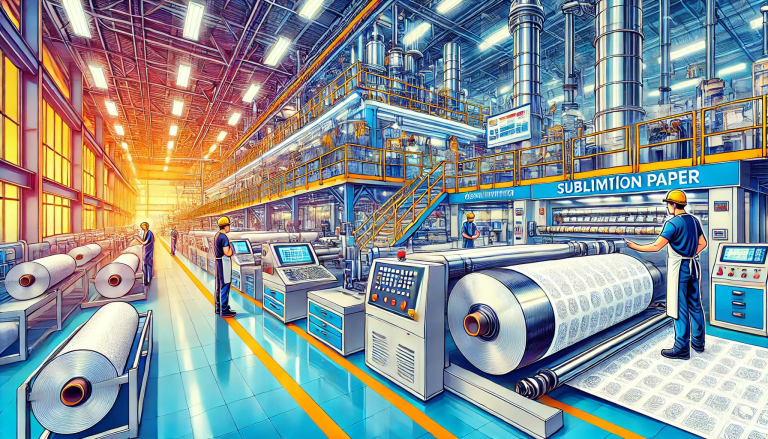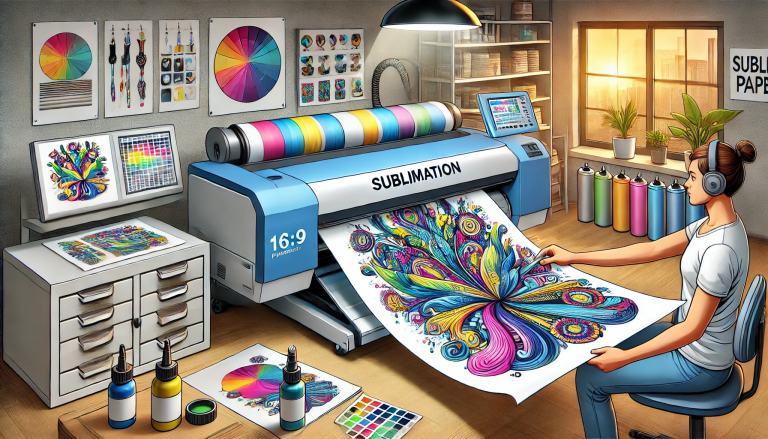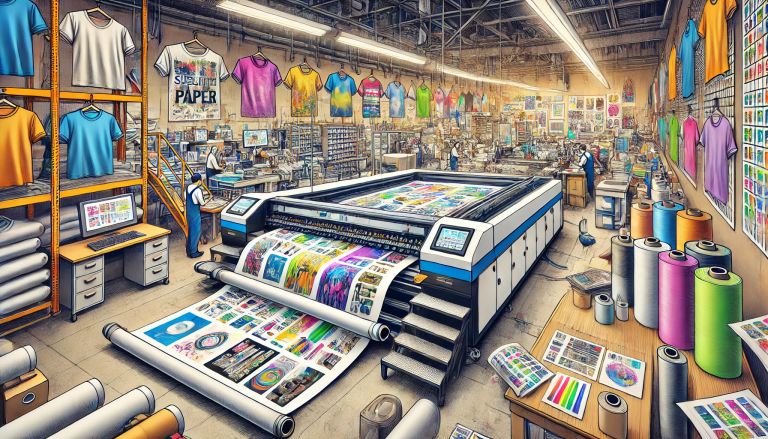In the ever-evolving world of textile printing, the quest for more efficient and versatile printing solutions is constant. Among the numerous advancements, two significant innovations have garnered attention: Sublimation Printing and Direct-to-Film (DTF) Transfer Printing. Each method has its distinct advantages, but an emerging question in the industry is the compatibility of sublimation ink with DTF transfer paper. This article aims to delve into the fundamentals of both technologies, their individual characteristics, and the feasibility and implications of using sublimation ink on DTF transfer paper.
Understanding Sublimation Printing
Sublimation printing, a popular choice for printing on polyester and polymer-coated substrates, involves a process where sublimation ink is turned into gas through heat and pressure, bonding with the fabric. This method is renowned for its ability to produce vibrant, full-color images with a high level of detail. The key component in this process is the sublimation ink, which is unique in its ability to transition from a solid directly to a gas without becoming liquid.
Direct-to-Film (DTF) Transfer Printing: An Overview
On the other hand, DTF transfer printing is a relatively new technology that involves printing a graphic onto a special film, which is then transferred onto various fabrics using heat and pressure. Unlike sublimation printing, DTF is not limited to polyester and can be used on a wider range of textiles, including cotton. The process uses a specific type of ink and requires a powder adhesive to be applied to the print before transferring.
The Compatibility Question
The core of the discussion lies in whether sublimation ink can be used effectively on DTF transfer paper. To address this, one must consider the unique properties of sublimation ink and how they interact with DTF transfer paper. Sublimation ink is designed to bond with polyester fibers at high temperatures, a feature that isn’t required for DTF transfers, which are more about the ink sitting on top of the fabric rather than bonding with its fibers.
Technical Challenges
One of the primary challenges of using sublimation ink on DTF transfer paper is the ink’s behavior during the transfer process. Sublimation ink is formulated to vaporize at high temperatures, a characteristic that might not align well with the DTF process. The DTF process requires the ink to remain on the surface of the transfer film and then adhere to the fabric. If the sublimation ink were to vaporize during this process, it could lead to incomplete or poor-quality transfers.
Quality and Durability Considerations
Even if the technical challenge of transferring the sublimation ink from the DTF paper to the fabric is overcome, there is the issue of quality and durability. Sublimation inks are known for their bright, vibrant colors on polyester materials. However, when transferred onto different fabrics using DTF methods, there’s uncertainty about the color vibrancy and washability of the prints. DTF prints typically involve a layer of adhesive that also affects the feel and flexibility of the final print, which might interact differently with sublimation inks.
The Need for Specialized Equipment
Another consideration is the equipment used. Sublimation printers and DTF printers have different specifications and operational requirements. While it might be technically possible to load sublimation ink into a DTF printer, the printer’s settings, such as temperature and pressure, are optimized for DTF inks and films. Using sublimation ink might require significant adjustments and could potentially damage the printer or produce sub-optimal prints.
Potential Applications and Benefits
If successfully implemented, using sublimation ink on DTF transfer paper could offer several benefits. It could potentially allow for greater flexibility in the types of fabrics that can be printed on, as well as possibly reducing costs by consolidating two different printing processes into one. However, these benefits are largely speculative until further experimentation and testing are conducted.
The Bottom Line
In conclusion, while the idea of using sublimation ink on DTF transfer paper is intriguing, it presents several technical challenges and uncertainties. The fundamental differences in how these inks are designed to work and the materials they are meant to be used with suggest that combining them might not yield the desired results. For now, it seems more prudent for businesses and individuals in the textile printing industry to use these technologies as they were originally intended, leveraging the unique strengths of each.
As the technology continues to evolve, perhaps future innovations will open up new possibilities. Until then, the focus should be on maximizing the capabilities of each method independently, ensuring the production of high-quality, durable prints for a variety of applications.




